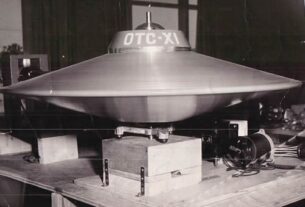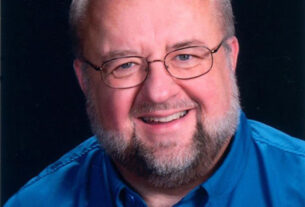The 1933 Magenta UFO incident refers to an alleged crash of an unidentified flying object in Magenta, a small town near Milan in Lombardy, Italy, which some researchers claim occurred on June 13, 1933, during the fascist regime of Benito Mussolini. This event, if true, would predate the 1947 Roswell incident by 14 years, potentially making it the earliest documented UFO crash in modern history. The story has gained attention in recent years due to claims by Italian researchers and whistleblowers, but it remains highly controversial, with significant skepticism surrounding its authenticity.
The incident first came to public attention through the work of Italian ufologist Roberto Pinotti, president of Italy’s National Ufological Center (CUN), and his colleague Alfredo Lissoni. They began investigating in 1996 after receiving what they describe as “original secret documents” from an anonymous source who claimed to have inherited them from a relative involved in Mussolini’s regime. According to Pinotti, the documents include two telegrams dated June 13, 1933, one demanding “absolute silence” over an “alleged landing on national soil of unknown aircraft” and another threatening journalists with arrest and penalties for reporting on the aircraft’s nature and origin. These telegrams were allegedly issued on Mussolini’s direct orders. Additional documents include handwritten memos on government letterhead, dated August 22, 1936, describing a cylindrical aircraft with portholes, white and red lights, spotted over northern Italy. Pinotti claims forensic analysis confirmed the paper and ink date to the 1930s, though the telegrams themselves were not tested.
The narrative suggests that Mussolini’s government recovered a saucer-shaped craft, approximately 10 meters in diameter, after it crashed in Magenta. Some accounts, reported by journalist Christopher Sharp of Liberation Times, allege that two human-like bodies with unusual characteristics were also retrieved, sparking speculation of extraterrestrial origins. Mussolini is said to have established a secret department, the “Gabinetto RS/33” (Special Research 33 Cabinet), to study the wreckage, with Nobel Prize-winning inventor Guglielmo Marconi supposedly at its head. Pinotti claims the craft was stored at an aircraft facility operated by SIAI-Marchetti in Vergiate, about 30 miles from Magenta, where attempts to reverse-engineer it were unsuccessful. Italian authorities initially suspected it might be a failed German experiment, possibly linked to the rumored “Die Glocke” anti-gravity device, but Germany reportedly denied involvement, leading Mussolini to conclude it was a “flying saucer.”
The story takes a geopolitical turn during World War II. Pinotti alleges that Mussolini confided in Pope Pius XII about the craft, given their good relations, but the Pope grew uneasy after Mussolini allied with Adolf Hitler. As the war turned, Allied forces secured the facility in 1944-1945, and the Pope is rumored to have facilitated the transfer of the craft to the United States, specifically to agents of the Office of Strategic Services (OSS), a precursor to the CIA. The wreckage was then allegedly transported to Area 51 before being moved to a defense contractor’s warehouse. This aligns with claims by Pentagon whistleblower David Grusch, who in 2023 told NewsNation that a “bell-like craft” was recovered in Magenta in 1933, predating Roswell, and that the Vatican assisted in its transfer to the U.S. Grusch’s statements were echoed by Lue Elizondo, former head of the Pentagon’s AATIP program, adding credibility to the narrative for some.
Further support comes from anecdotal accounts. Marco Negri, a 42-year-old Italian whose family has lived in northern Italy for over a century, told the Daily Mail in 2023 that his great-great-grandfather Pietro Negri, a mayor in Arona during the 1920s-1950s, spoke of a “strange metal plane with no wings” crashing between Vergiate and Magenta in 1933, accompanied by heavy censorship by fascist secret police. Additionally, posts on X in 2024 cite a supposed confirmation by Guglielmo Marconi’s grandson, claiming Marconi’s involvement with RS/33, though this lacks independent verification. CIA officer Richard Bissell, who helped establish Area 51, allegedly briefed presidential advisor Harald Malmgren about the Magenta crash, as noted in 2025 posts on X, further fueling the story’s momentum.
Skeptics, however, raise serious doubts. The existence of the RS/33 Cabinet and Marconi’s involvement remain unverified by Italian historians, with no official records of the group surfacing. The documents Pinotti presents, while claimed to be authentic, have not been universally accepted—some researchers question their provenance, suggesting they could be forgeries or part of a disinformation campaign. British historian Graeme Rendall, who studies WWII UFO sightings, finds the evidence inconclusive. The lack of physical evidence, such as the craft itself or recovered bodies, weakens the case, as does the absence of contemporary Italian media reports, which might have been suppressed but leave a gap in corroboration.
Alternative explanations have been proposed. A 1933 Domenica del Corriere article, as referenced by researcher Alfredo Lissoni, reported a lightning strike in the Magenta area, injuring five workers and causing burns, which some speculate might have been a cover story for the crash. Lissoni also points to a meteor sighting on January 1, 1933, observed from Turin to Switzerland, suggesting the crash might have been misdated or conflated with this event. However, a meteor doesn’t align with the saucer-shaped craft described, nor does it explain the alleged recovery and secrecy.
The incident’s historical context adds complexity. In 1933, Mussolini was consolidating power, and the Fascist regime was known for strict censorship, which could explain the lack of public records. The era’s technological limitations also make a terrestrial explanation—like a secret Italian or German experiment—unlikely, as neither nation had the capability to produce a craft matching the description. The involvement of the Vatican, as claimed by Grusch, raises questions about why a religious institution would engage in such a transfer, though the Church’s historical interest in celestial phenomena, like meteorites, provides some cultural backdrop.
The Magenta incident’s significance lies in its potential to rewrite UFO history, challenging the Roswell-centric narrative. Grusch’s 2024 comments on The Joe Rogan Experience—where he implied earlier recoveries predated 1933 but chose Magenta as an international case he could discuss—add intrigue, though he provided no specifics on earlier events. The lack of hard evidence, combined with the story’s reliance on secondhand documents and whistleblower testimony, keeps it in the realm of speculation. Whether a genuine UFO crash, a historical hoax, or a misidentified natural event, the 1933 Magenta incident remains a tantalizing mystery, reflecting the enduring tension between belief, secrecy, and the search for truth in UFO research.



